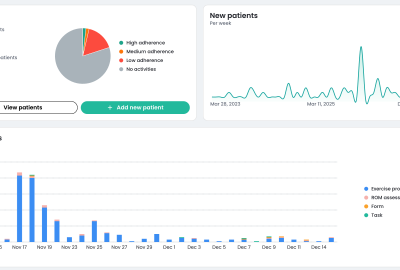In July 2025, the Centers for Medicare & Medicaid Services (CMS) introduced a new mandatory bundled payment model: the Ambulatory Specialty Care Model (ASM). Launching in January 2027, ASM will directly affect how outpatient specialists are paid to manage low back pain, one of the most common and costly conditions in Medicare.

In this post, we break down what ASM is, who it affects, how it works, and what healthcare organizations can do now to prepare.
What Is the ASM Model, and When Does It Start?
- ASM stands for Ambulatory Specialty Care Model, a 5-year CMS Innovation Center initiative.
- Begins January 1, 2027, ending December 31, 2031.
- Designed to move ambulatory specialists into value-based care using a bundled payment structure.
- Aims to reduce unnecessary care, promote early intervention, and reward better outcomes.
Which Conditions Are Included in ASM?
ASM focuses on two high-impact clinical areas:
- Heart failure
- Low back pain
In this post, we’ll focus on low back pain, which:
- Is a leading cause of disability and Medicare spending
- Often leads to costly imaging, opioids, injections, and surgeries
- Can often be effectively managed with early, conservative treatment and physical therapy
Who Will Be Required to Participate in ASM?
- Participation will be mandatory for selected geographic areas.
- Applies to Medicare-enrolled outpatient specialists, including:
- Orthopedic surgeons
- Pain management physicians
- Neurosurgeons
- Physiatrists
- Other MSK providers
How Does the ASM Model Work?
ASM links payment to performance in four key domains:
- Quality
- Measures like functional status improvement, pain reduction, patient satisfaction
- Cost
- Total Medicare spending for the episode of care
- Improvement Activities
- Use of conservative treatment pathways, early identification, social risk screening, and patient engagement tools
- Promoting Interoperability
- Use of digital tools that track, report, and share data across care teams
Providers are placed in a two-sided risk arrangement—they can earn incentive payments or face financial penalties based on how they perform compared to benchmarks.
What Are the Goals of ASM for Low Back Pain?
This CMS program aims to:
- Shift specialists from high-cost, procedure-first care to conservative, early management
- Reduce:
- Opioid prescribing
- Unnecessary imaging
- Avoidable surgeries and injections
- Increase use of:
- Non-pharmacologic treatments, especially exercise-based rehab
- Remote monitoring and patient engagement platforms
What Can Providers Do to Prepare for ASM?
Here’s how specialists and health systems can get ready:
- Review current low back pain workflows:
- Are patients being screened early?
- Is conservative care used before surgery or injections?
- Build partnerships across care teams:
- Integrate with primary care and rehab professionals.
- Start tracking outcomes:
- Use tools that collect functional status, pain scores, and engagement data.
- Address social needs:
- Screen for transportation, housing, and barriers to care—these affect outcomes under ASM.
- Implement digital tools that:
- Offer remote rehab and real-time guidance
- Improve access and patient adherence
- Document quality and cost metrics for reporting
Why Digital MSK Solutions Are Critical Under ASM
Digital rehab platforms like Kemtai can help specialists succeed under ASM by:
Reducing Total Cost of Care
- Eliminates unnecessary in-person PT, imaging, and follow-ups
- Supports faster recovery with higher adherence
Improving Quality Scores
- Tracks real-time range of motion, exercise completion, and progress
- Enables patient-reported outcomes and satisfaction
Enhancing Patient Engagement
- Easy-to-use, at-home interface with real-time feedback
- Encourages daily activity and reduces dropout rates
- Facilitating Interoperability
- Shares data with EHRs and care teams via API
- Helps meet MVP reporting requirements
Kemtai’s computer vision technology offers a scalable, evidence-based approach to managing low back pain—perfectly aligned with the goals of ASM.
ASM Is Coming – Now’s the Time to Prepare
The Ambulatory Specialty Care Model represents a seismic shift in how CMS pays specialists for low back pain care. Success under ASM will depend on delivering better outcomes at lower costs, with a clear focus on conservative management, data-driven decisions, and interdisciplinary care.
Digital MSK solutions like Kemtai may help providers not only comply—but thrive.
Want to learn how Kemtai supports success under ASM? Feel free to reach out to info@kemtai.com to learn more.



